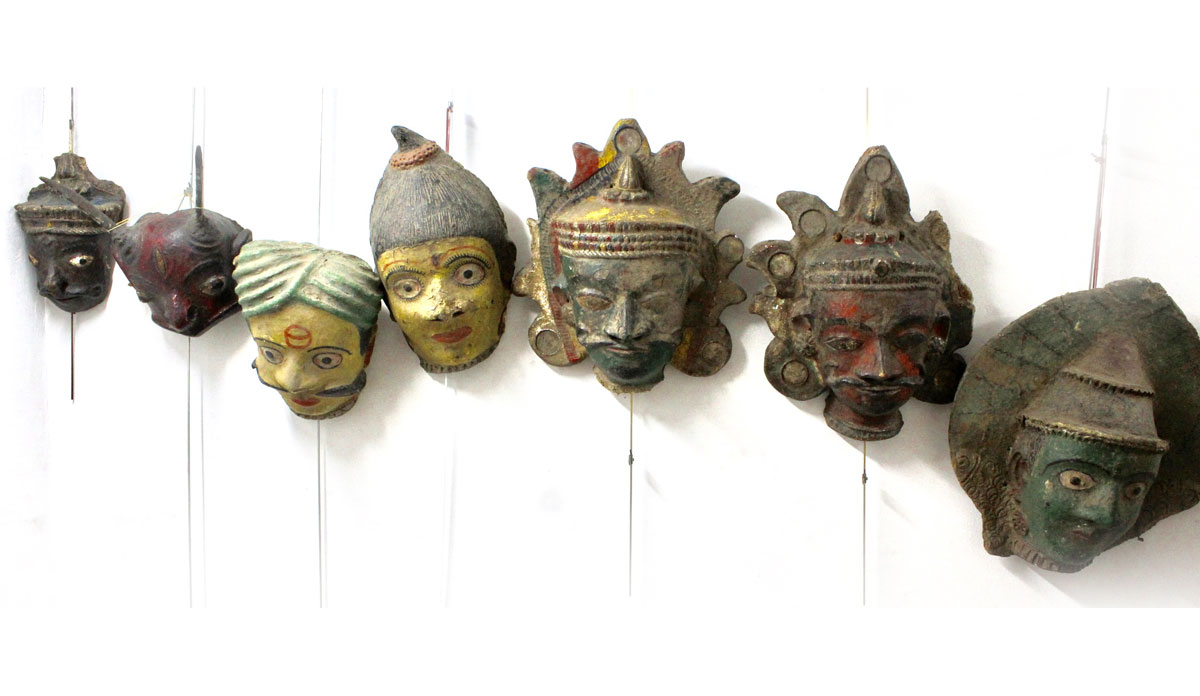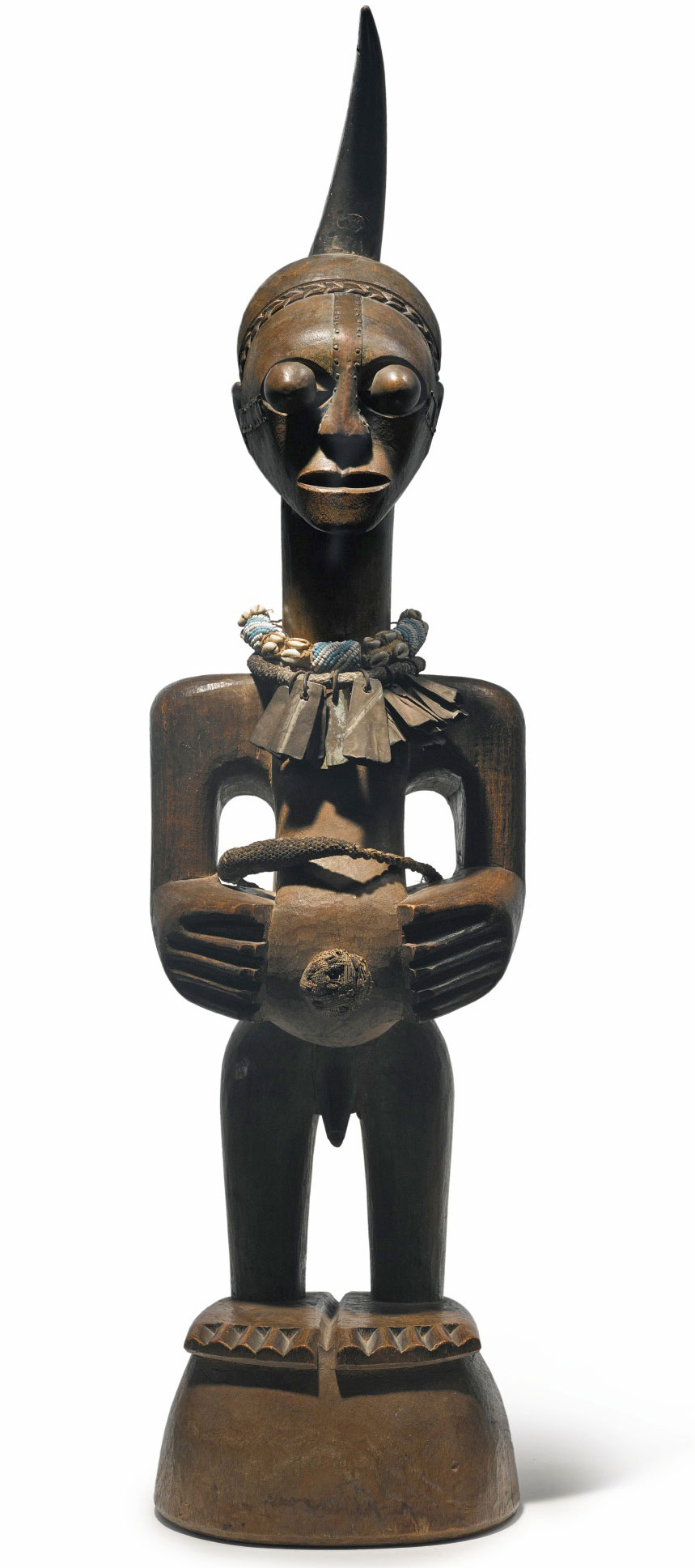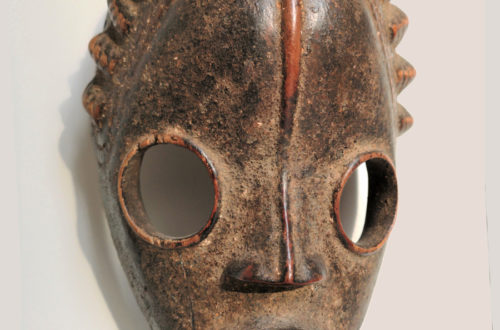 This Bamana Chi Wara headdress features a pair of antelope carvings. On March 8th of this year we posted a male version. Now you can see the male and female versions together. This is a high-res photo so blow it up to see the details. A pair of Chi Waras is (arguably) the greatest example of African traditional sculpture. Can you think of anything better?
This Bamana Chi Wara headdress features a pair of antelope carvings. On March 8th of this year we posted a male version. Now you can see the male and female versions together. This is a high-res photo so blow it up to see the details. A pair of Chi Waras is (arguably) the greatest example of African traditional sculpture. Can you think of anything better?
“While there are several versions of this sculpture, the discovery of agriculture is credited to the hero Chi Wara, a half antelope, half human figure born from the union of the sky goddess Mousso Koroni and an earth spirit in the shape of a cobra. The Chi Wara came to earth to teach humans to sow crops, and thus is honored at both sowing and harvest festivals.
“The Chi Wara itself is usually represented as a Roan Antelope with an almost human face, but also takes shapes of other creatures and emblems of farming. The hero descends from the sky goddess, and thus represents the sun, its body is often elongated and short legged to represent the aardvark who burrows into the earth like a farmer. Its high horns echo the stalks of millet, and it stands on a dancer clad in a mass of raffia stalks to represent both flowing water and a bountiful harvest. The zig-zag patterns echo the movement of the sun across the sky, and the penis of the male figure stands low to the ground, fertilizing the earth. The Chi Wara figures always appear as a male/female pair, combining the elements of fertility of humans with fertility of the earth. The female figure usually carries a young antelope on her back, and is said to represent human beings carried by the Chi Wara hero, as well as a newborn human carried on a mother’s back.
“As farmers of the upper Niger river savanna the blessing of agriculture is of central importance to Bambara society. These traditions survive in part because the Bambara were one of the last cultures in the area to embrace Islam, after the fall of the Bambara Empire in the late 19th century. Bambara culture has traditionally had a strict set of age and caste cofraternities (ton/jo/jow), and the chi wara ton society is one of the more important. It gathers all young adult males of the Soli age group to work the fields at clearing, sowing and harvest, when the greatest number of laborers is needed. Secret teachings of the chi wara ton pass the needed skills for this work, upon which the very survival of the community depends.
“The chi wara ton is also the only major Bambara society which includes both sexes. Women’s labor is needed for agriculture, just as both sexes are needed for human reproduction.
“The it is always danced with each wooden figure attached to a basket on the dancer’s head, and the body covered in a huge pile of raffia. Often the face is obscured with raffia that has been colored or decorated, and the dancer carries a long staff. The figures are always in one or more male/female pairs, with the female usually dancing behind the male, fanning him and spreading his powers into the gathered community. The Male figures leap to represent the antelope, and then scratch the earth with their staves or horns as the Chi Wara teaches humans to cultivate crops.” (Wikipedia)






One Comment
Mark
Thanks for the information on these headdresses. They look similar to a pair we have owned since the 1990s.